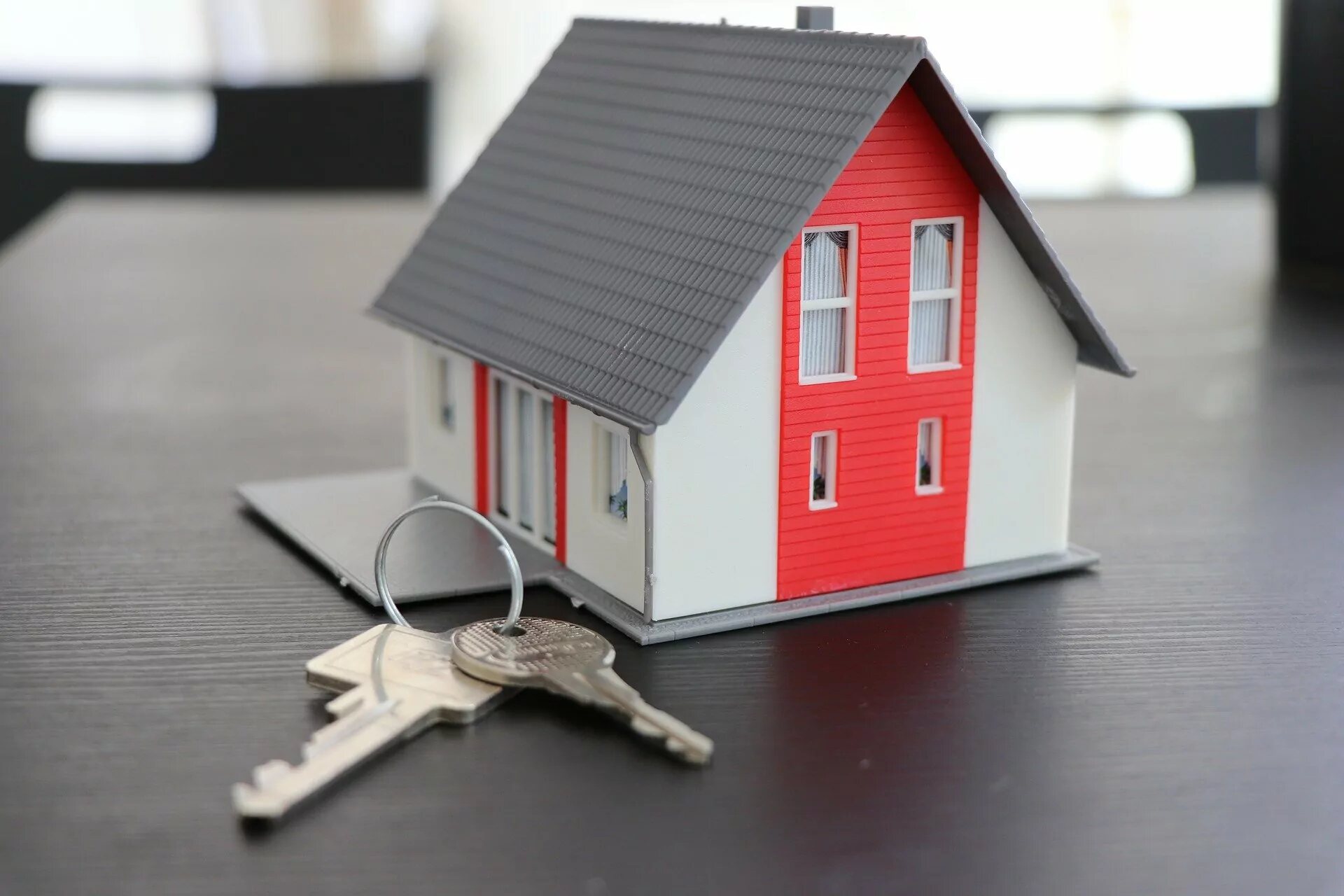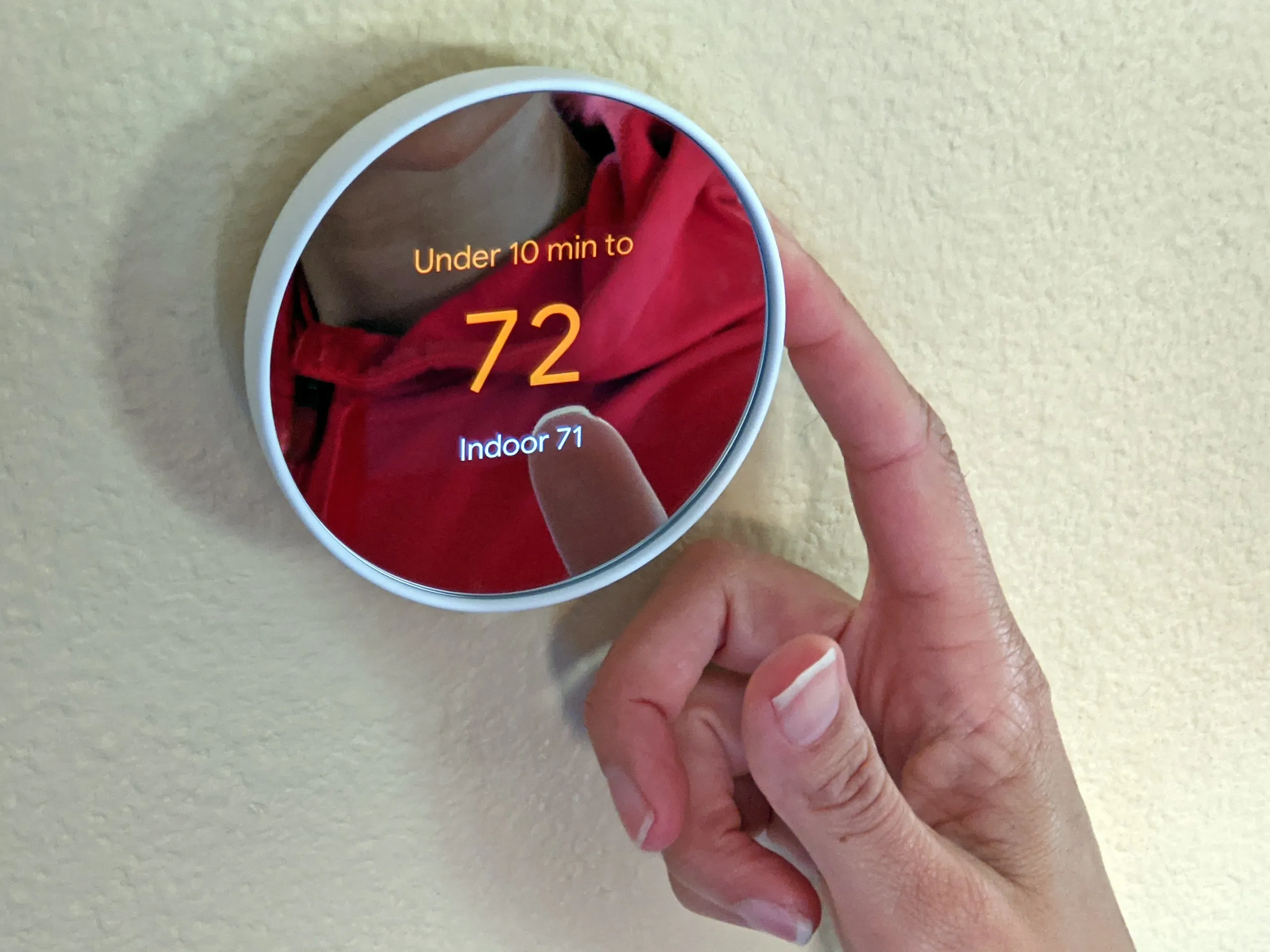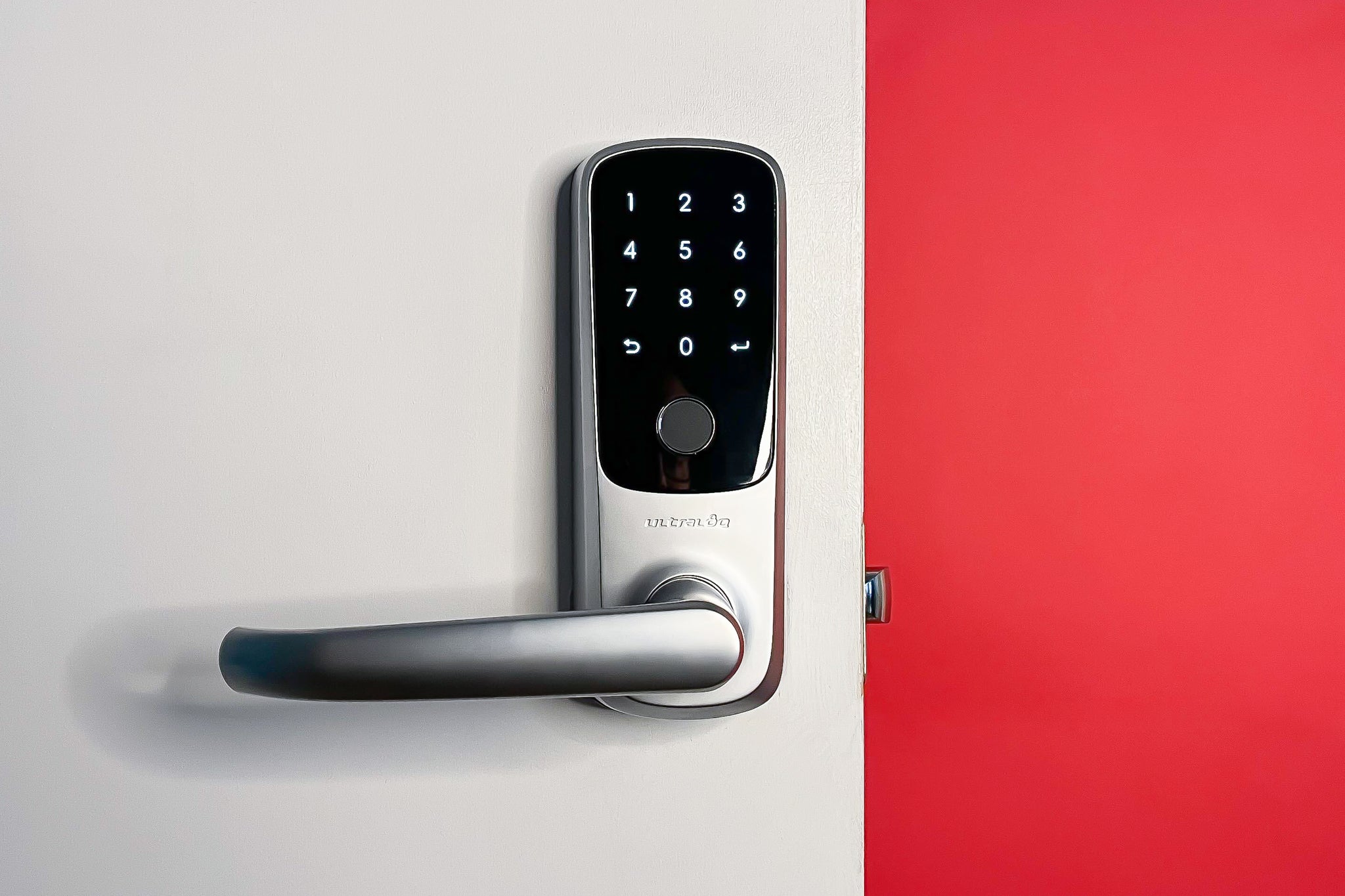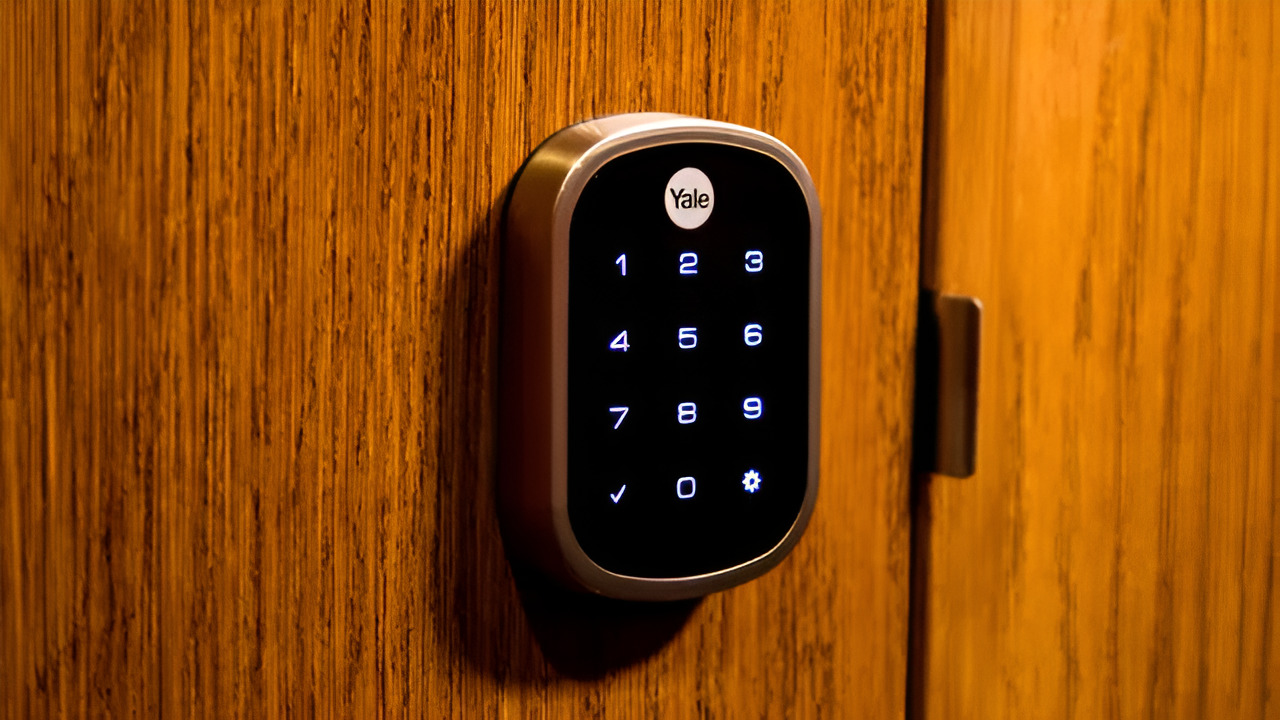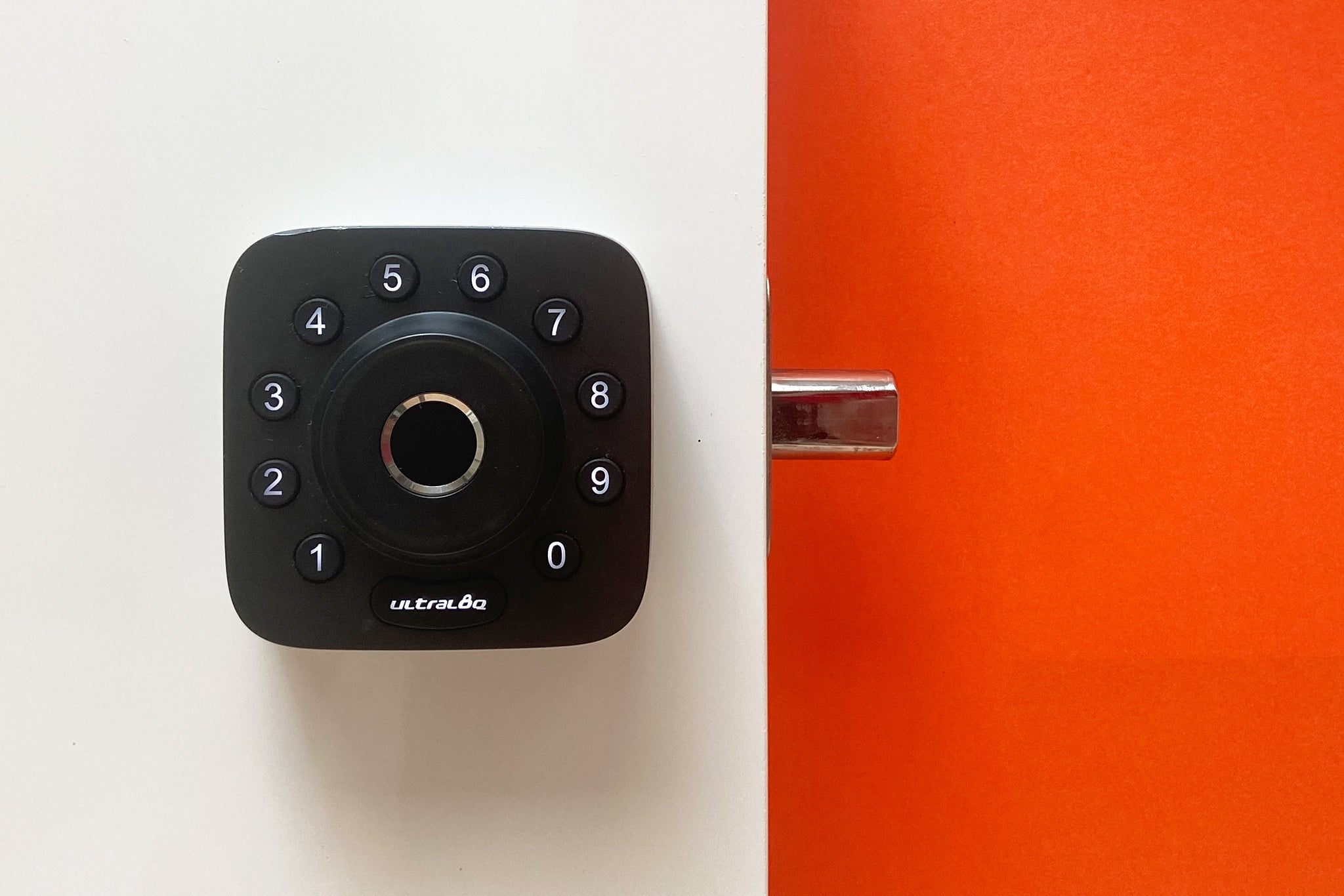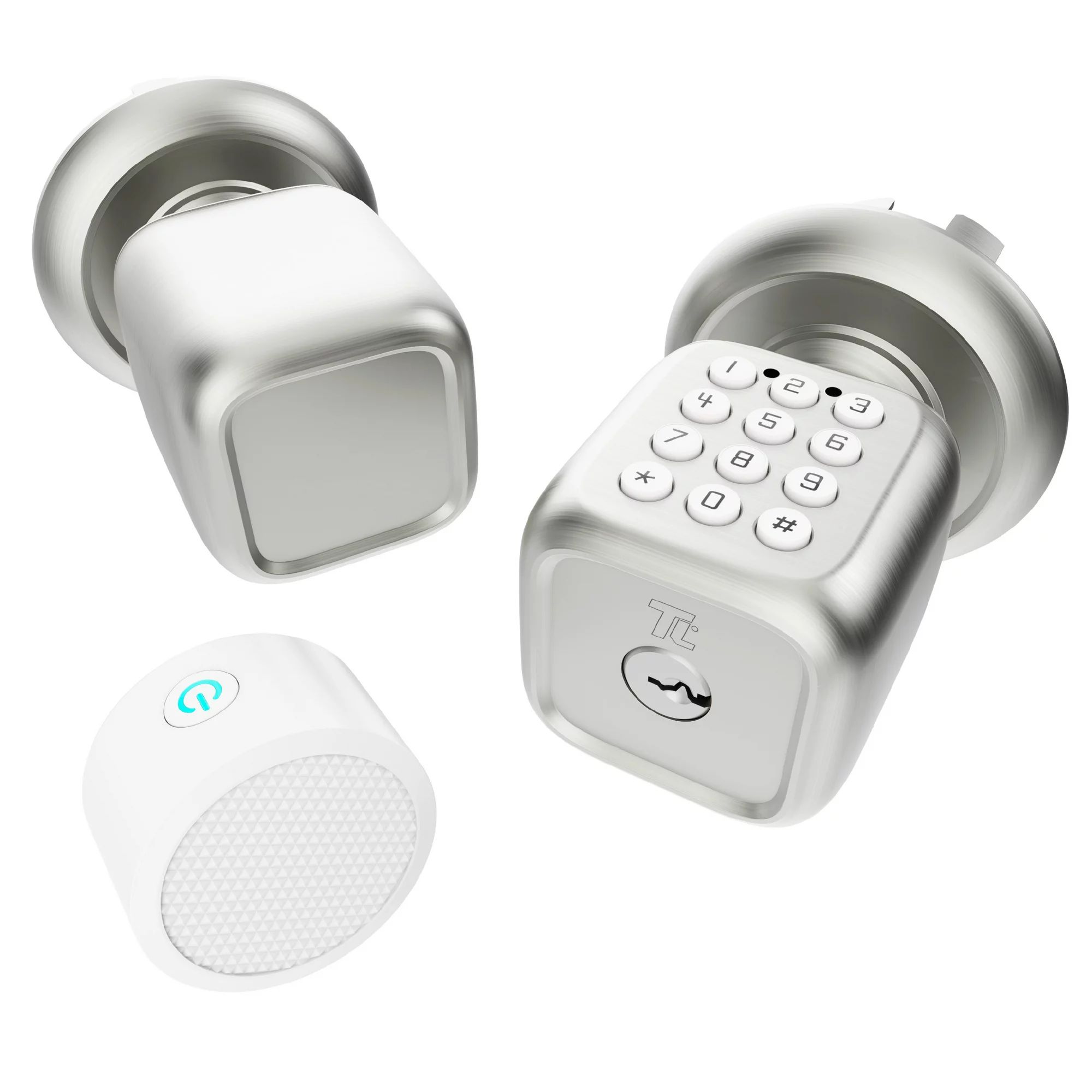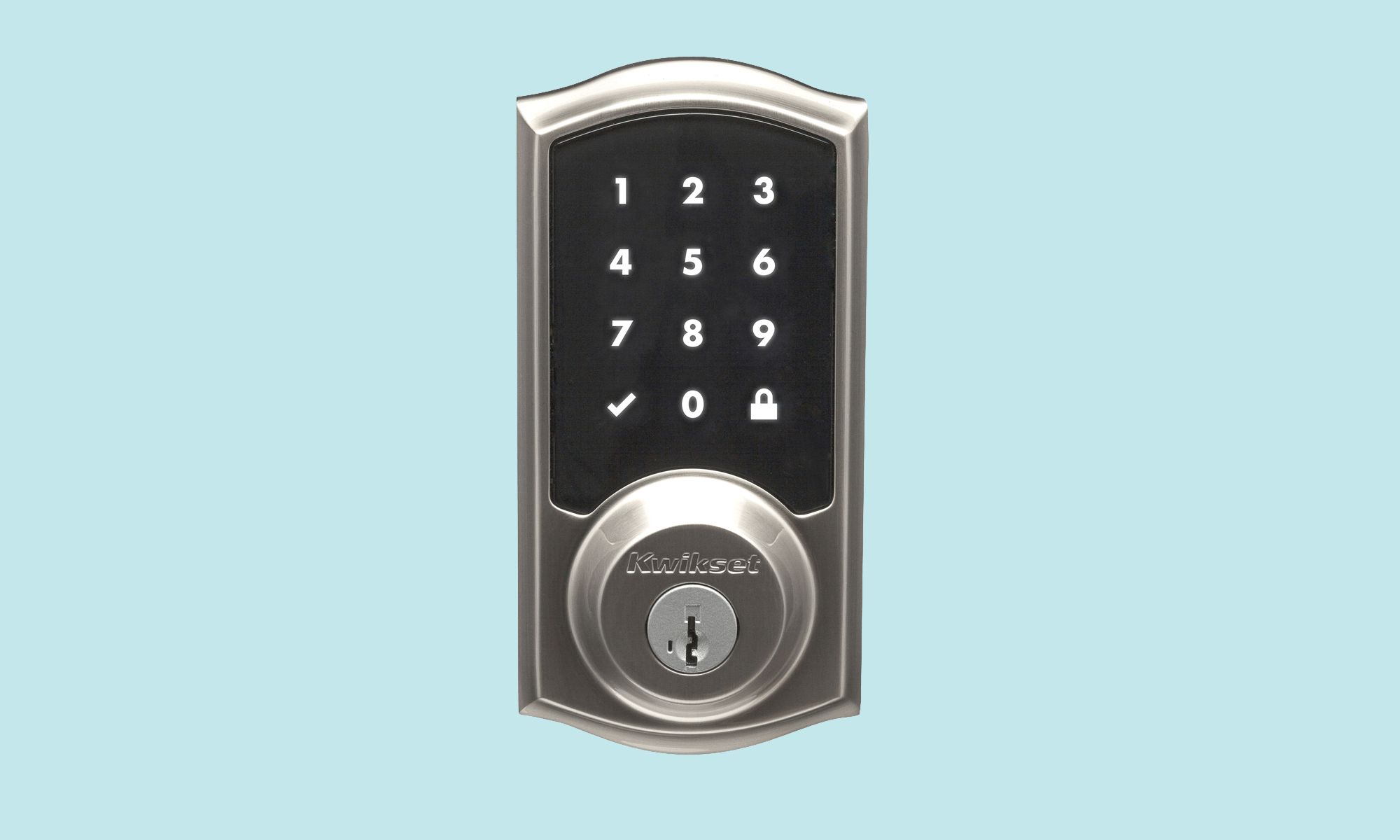Introduction
Welcome to the world of being a landlord, where you are responsible not only for the upkeep and maintenance of your rental properties but also for the safety and security of your tenants. Home security is a crucial aspect that cannot be overlooked when it comes to rental homes. Ensuring the safety of your tenants not only protects their well-being but also safeguards your investment. In this article, we will explore the importance of home security for rental homes and discuss the various measures that landlords need to take to ensure a safe living environment for their tenants.
As a landlord, you have legal responsibilities to provide a safe and secure environment for your tenants. Besides the obvious ethical reasons, failure to meet these obligations can result in legal repercussions and financial liabilities. It is important to understand the legal requirements and take proactive steps to address any potential security risks.
Assessing the security of your rental properties is a critical first step. Understanding vulnerabilities and potential areas of concern will help you devise a comprehensive security plan. This involves evaluating both the exterior and interior of your rental homes and identifying potential weak points that could be exploited by intruders. By implementing appropriate security measures, you can not only deter criminals but also provide peace of mind to your tenants.
Exterior home security measures play a vital role in protecting your rental properties. These include lighting, landscaping, and physical barriers such as fences or gates. Adequate lighting not only improves visibility but can also deter criminals by eliminating hiding spots. Well-maintained landscaping can also act as a deterrent, as unkempt yards signal neglect and may attract unwanted attention. Installing security features like fences or gates can further enhance the security of your property.
In addition to external security measures, it is equally important to focus on interior home security. This involves implementing measures such as sturdy doors and windows, deadbolt locks, and security systems. Reinforcing access points and using high-quality locks can significantly reduce the risk of unauthorized entry. Investing in security systems, including alarms and surveillance cameras, can provide an added layer of protection and act as a deterrent to potential burglars.
Educating tenants about home security is another crucial aspect. Ensuring that your tenants understand the importance of home security and providing them with guidelines on how to keep themselves and the property safe can go a long way in preventing potential security incidents.
Insurance considerations are also vital in the realm of home security for rental homes. Reviewing your insurance policy and ensuring adequate coverage for potential security risks can protect you and your tenants in the event of unforeseen circumstances.
This article will discuss these topics in detail, providing landlords with valuable insights into the world of home security for rental homes. By following these guidelines and taking the necessary precautions, you can create a safe and secure living environment for your tenants, ensuring their well-being and your peace of mind as a responsible landlord.
Importance of Home Security for Rental Homes
Ensuring the security of your rental homes should be a top priority as a landlord. The safety and well-being of your tenants play a crucial role in their overall satisfaction and happiness while living in your property. By prioritizing home security, you not only protect your tenants but also safeguard your investment. Here are the key reasons why home security is essential for rental homes.
1. Tenant Safety
The primary reason for investing in home security measures is to ensure the safety of your tenants. As a landlord, you have a duty to provide a safe living environment for your tenants. By minimizing security risks and implementing preventive measures, you create a sense of security for your tenants, allowing them to live with peace of mind.
2. Property Protection
A secure rental property is less likely to be targeted by criminals. Visible security measures, such as alarms, surveillance cameras, and well-lit areas, act as deterrents and reduce the risk of burglaries and vandalization. Protecting your property from potential damages and losses not only saves you from financial burdens but also ensures a smooth and profitable rental business.
3. Legal Obligations
Landlords have legal responsibilities to maintain a safe and habitable living environment for their tenants. Failure to meet these obligations can result in legal issues and potential liability. By implementing proper security measures, you demonstrate your commitment to fulfilling your legal duties as a landlord and protecting the rights of your tenants.
4. Tenant Retention and Attraction
A rental property that prioritizes home security is more likely to attract and retain tenants. In today’s competitive rental market, tenants value their safety and are more likely to choose a property that provides a secure living environment. By investing in home security measures, you improve the overall appeal of your rental property, attracting quality tenants and reducing tenant turnover.
5. Peace of Mind
As a landlord, knowing that your rental homes are adequately protected offers peace of mind. By implementing security measures, you can confidently address any potential security concerns and ensure the well-being of your tenants. This peace of mind allows you to focus on other aspects of your rental business, knowing that you have taken the necessary steps to protect your property and tenants.
Overall, home security is not just a luxury but a necessity for rental homes. It helps to create a safe environment, protects your property, fulfills legal obligations, attracts and retains tenants, and provides you with peace of mind. By investing in home security measures, you demonstrate your commitment to tenant safety and welfare, resulting in a successful and thriving rental business.
Legal Responsibilities of Landlords for Home Security
As a landlord, you have legal responsibilities to provide a safe and secure living environment for your tenants. These responsibilities extend to home security, and failure to meet them can result in legal consequences and financial liabilities. Understanding your legal obligations is crucial to ensuring compliance and protecting the well-being of your tenants. Here are the key legal responsibilities of landlords for home security.
1. Duty of Care
Landlords have a duty of care towards their tenants. This means taking steps to ensure that the rental property is safe and secure. This duty includes regularly inspecting the property, identifying potential security risks, and addressing them promptly. Failure to fulfill this duty can result in lawsuits if a tenant is harmed due to a security lapse.
2. Repair and Maintenance
Landlords are responsible for maintaining the rental property in a habitable condition, including the security features. This includes repairing and replacing locks, doors, windows, and other security components as needed. Regular maintenance should be conducted to ensure that security measures are in proper working order. Failing to address security issues promptly can pose a risk to tenant safety and result in legal disputes.
3. Compliance with Building Codes
Landlords must ensure that the rental property meets all applicable building codes and regulations concerning security features. This includes installing proper locks, adequate lighting, and any other required security measures. Failure to comply with building codes can lead to fines, penalties, and potential legal actions from tenants.
4. Security Deposit Handling
Security deposits play a significant role in rental agreements, including home security. Landlords must handle security deposits properly and in accordance with local laws. This includes refunding the deposit within the required timeline or providing a detailed explanation of any deductions. Mishandling security deposits can result in disputes and possible legal actions from tenants.
5. Communication and Disclosure
Landlords must communicate with tenants about the existing security measures and any potential security risks. This includes providing information about the property’s security features, such as alarms or surveillance systems, and explaining their operation. Landlords should also disclose any known security issues or history of criminal activities in the area. Failure to communicate and disclose relevant information can lead to legal consequences.
It is essential to familiarize yourself with the specific laws and regulations regarding landlord responsibilities for home security in your jurisdiction. By understanding and fulfilling your legal obligations, you not only protect your tenants but also minimize the risk of legal disputes and financial liabilities. Working closely with legal professionals and staying updated on relevant laws will help you navigate the complex landscape of landlord responsibilities and ensure compliance.
Assessing the Security of Rental Properties
Assessing the security of your rental properties is a crucial step in creating a safe living environment for your tenants. By identifying potential vulnerabilities and taking proactive measures to address them, you can significantly enhance the security of your properties. Here are the key steps to assess the security of your rental properties.
1. Conduct a Security Audit
Start by conducting a comprehensive security audit of your rental properties. This involves evaluating both the exterior and interior areas for potential security risks. Walk around the property and look for any weak points, such as broken locks, faulty doors or windows, or inadequate lighting. Identify areas where an intruder may attempt to gain unauthorized access.
2. Identify Vulnerable Areas
Determine the vulnerable areas of your rental properties that require immediate attention. This may include poorly lit entryways, weak doors or windows, or lack of proper boundary fencing. Pay special attention to areas that are hidden from view or could potentially attract criminal activity.
3. Evaluate Entry Points
Assess the security of entry points, such as doors and windows. Check if they are intruder-resistant and have proper locks and reinforcements. Consider upgrading to solid-core doors and installing deadbolt locks for added security. Ensure that windows are equipped with sturdy locks or security bars.
4. Improve Lighting
Review the lighting around your rental properties. Inadequate lighting can create dark spots that provide cover for potential intruders. Install well-placed outdoor lighting to improve visibility and deter criminal activity. Motion sensor lights are particularly effective for illuminating entryways and vulnerable areas.
5. Secure Outdoor Areas
Assess the security of outdoor areas such as yards, gardens, and parking lots. Trim overgrown shrubs and trees that could provide hiding places for intruders. Consider installing fencing or gates to restrict access to the property and deter unauthorized entry.
6. Consider Security Systems
Evaluate the need for security systems, including alarms, surveillance cameras, or video doorbells. These systems can act as powerful deterrents and provide valuable evidence in the event of a security incident. Determine the appropriate level of security based on the location and characteristics of your rental properties.
7. Consult with Professionals
Seek advice from professionals in the security industry. They can conduct a more in-depth assessment of your rental properties and provide recommendations specific to your situation. Security experts can offer insights on the latest technologies and best practices to enhance the safety and security of your rental properties.
Regularly reassessing the security of your rental properties is essential. Factors such as changes in the neighborhood, new vulnerabilities, or advancements in security technologies may require updates to your security measures. By staying vigilant and proactive in assessing and addressing security risks, you can ensure the safety and well-being of your tenants, protecting both your investment and your reputation as a responsible landlord.
Exterior Home Security Measures for Rental Homes
Enhancing the exterior security of your rental homes is crucial in deterring potential intruders and ensuring the safety of your tenants. By implementing the right security measures, you can create a secure and welcoming environment for your tenants. Here are some effective exterior home security measures that landlords can consider.
1. Adequate Lighting
Proper lighting is key to improving the security of your rental property. Well-lit areas not only deter potential intruders but also provide a sense of safety for your tenants. Install outdoor lighting along pathways, entrances, and parking areas. Consider using motion sensor lights to activate when someone approaches, further enhancing visibility and increasing security.
2. Secure Entryways
Securing entryways is of utmost importance in preventing unauthorized access. Install solid-core doors made of sturdy materials that are difficult to break. Reinforce doors with deadbolt locks and consider adding a peephole or a video doorbell to allow tenants to verify visitors before opening the door. Ensure that hinges are located on the interior side of the door to prevent tampering.
3. Install Security Fencing
Installing security fencing around the perimeter of your rental property adds an additional layer of security. It helps deter intruders and restricts access to the premises. Choose fencing materials that are durable and difficult to climb, such as wrought iron or chain-link fences. Ensure that gates are sturdy and have secure locks.
4. Trim Landscaping
Maintaining the landscaping around your rental property is essential for security purposes. Overgrown trees, shrubs, or bushes can provide hiding spots for potential intruders. Regularly trim and maintain the landscaping, specifically around windows, entrances, and other vulnerable areas. This helps to eliminate potential hiding places and increases visibility.
5. Secure Windows
Windows are often targeted entry points for intruders. Ensure that all windows are equipped with sturdy locks that are in good working condition. Consider installing window security film, which makes it more difficult for windows to shatter. This not only acts as a deterrent but also provides an extra barrier against break-ins.
6. Set Up Security Cameras
Installing security cameras can greatly enhance the security of your rental property. Visible cameras act as a deterrent, as potential intruders are less likely to target a property that is being monitored. Place cameras in strategic locations, such as entryways, parking areas, and common areas, to ensure comprehensive coverage. Inform your tenants about the presence of security cameras to promote transparency.
7. Encourage Neighborhood Watch
Promote a sense of community and security by encouraging your tenants to participate in a neighborhood watch program. Neighborhood watch programs involve residents looking out for each other and reporting any suspicious activities to the authorities. This collective effort helps to deter crime and enhances the overall security of the area surrounding your rental property.
By implementing these exterior home security measures, you create a safer living environment for your tenants. Improved lighting, secure entryways, fencing, well-maintained landscaping, secure windows, security cameras, and a neighborhood watch program all contribute to a more secure rental property. Remember to regularly assess and update your security measures to ensure continued effectiveness and stay one step ahead of potential security risks.
Interior Home Security Measures for Rental Homes
While enhancing the exterior security of your rental homes is important, implementing interior home security measures is equally vital. By focusing on the security of the interior spaces, you can further ensure the safety and well-being of your tenants. Here are some effective interior home security measures that landlords can consider.
1. Sturdy Doors and Locks
Ensure that all interior doors are made of solid-core materials that are difficult to break. Replace weak or damaged doors with stronger alternatives. Install high-quality locks on all interior doors to prevent unauthorized access between units and secure storage areas or utility rooms.
2. Deadbolt Locks
Install deadbolt locks on interior doors, particularly on the doors leading to the main entrance and bedrooms. Deadbolts offer an extra layer of security and are harder to bypass compared to regular doorknob locks. Teach tenants how to properly use and engage deadbolt locks for maximum security.
3. Window Security
Secure windows with locks or window security bars to prevent unauthorized entry. Locks on windows should be in good working condition and regularly maintained. Consider installing window sensors that can trigger an alarm if someone tries to tamper with or open a window without permission.
4. Security Systems
Install security systems in common areas, such as hallways or common rooms, to deter intruders and monitor activities. Choose a reliable security system that includes features such as motion detectors, door/window sensors, and an alarm system. Make sure the security system is professionally installed and connected to a monitoring service, if desired.
5. Security Cameras
Consider installing security cameras in common areas or at entrances to capture any suspicious activities. Visible cameras act as a deterrent, while hidden cameras can provide valuable evidence if a security breach occurs. Clearly inform tenants about the presence of security cameras for transparency and compliance with privacy laws.
6. Fire Safety
Implement fire safety measures to protect your rental property and tenants from potential fire hazards. Install smoke detectors in every unit and regularly test and maintain them. Provide fire extinguishers in common areas and educate tenants on fire evacuation procedures and the location of fire exits.
7. Tenant Education
Educate your tenants on the importance of home security and provide guidelines on how they can contribute to maintaining a secure living environment. Encourage them to always lock their doors and windows, use peepholes before opening the door to strangers, and report any suspicious activities to the appropriate authorities.
By implementing these interior home security measures, you create a safer living environment for your tenants. Sturdy doors and locks, deadbolt locks, window security, security systems, security cameras, fire safety measures, and tenant education all contribute to enhancing the security of the interior spaces of your rental homes. Regularly maintain and update these security measures to ensure continued effectiveness and the well-being of your tenants.
Security Systems and Surveillance Options for Rental Homes
Security systems and surveillance options play a crucial role in enhancing the safety and security of rental homes. By investing in these technologies, landlords can not only deter potential intruders but also provide peace of mind to their tenants. Here are some security systems and surveillance options that landlords can consider for their rental properties.
1. Alarm Systems
Alarm systems are a popular choice for rental homes as they provide an immediate response to potential security threats. These systems typically include sensors on doors and windows that trigger an alarm when breached. When the alarm is activated, it alerts both tenants and, if connected to a monitoring service, a security company. This immediate response can help scare off intruders and notify the authorities.
2. Video Surveillance Systems
Installing video surveillance systems in key areas of your rental property can provide valuable footage in the event of a security incident. Cameras placed near entrances, hallways, or common areas can act as a deterrent and provide evidence if a crime occurs. There are various types of video surveillance systems available, including wired, wireless, and cloud-based systems, each with their own benefits and considerations.
3. Video Doorbells
Video doorbells have gained popularity in recent years and are an excellent option for rental homes. These devices replace the traditional doorbell and include a camera that allows tenants to see and communicate with visitors from their smartphone or other devices. Video doorbells provide an added layer of security, allowing tenants to verify the identity of visitors before opening the door.
4. Access Control Systems
Access control systems use key cards, key fobs, or biometric authentication to control access to certain areas of the rental property. These systems are commonly used in apartment complexes or buildings with multiple units. Access control systems can restrict access to residents and authorized personnel only, enhancing security and reducing the risk of unauthorized entry.
5. Security and Safety Apps
Advancements in technology have led to the development of security and safety apps that can be utilized in rental homes. These apps allow tenants to monitor their security systems, receive alerts, and control various aspects of their living environment remotely. Landlords can recommend or provide access to these apps to help tenants feel more in control and connected to their security measures.
6. Smart Home Integration
Smart home integration allows for seamless integration between security systems and other devices within the rental property. This could include integrating alarm systems with smart lighting, locks, or even voice-controlled assistants like Amazon Alexa or Google Assistant. Smart home integration provides convenience and flexibility in managing security while maximizing the overall functionality of the rental home.
When considering security systems and surveillance options for your rental property, it is important to select the ones that best suit your needs and the unique characteristics of the property. It is also important to inform your tenants about the presence and usage of these systems to ensure transparency and compliance with privacy laws. By choosing the right security systems and surveillance options, you can significantly enhance the safety and security of your rental homes.
Educating Tenants about Home Security
Educating your tenants about home security is an essential aspect of creating a safe living environment in your rental homes. By providing them with the necessary knowledge and guidelines, you empower them to contribute actively to the security of the property. Here are some key steps to educate your tenants about home security.
1. Provide a Welcome Packet
Include home security information in the welcome packet given to new tenants. This packet should contain essential details about the property’s security features, emergency contact numbers, and general safety guidelines. Consider including brochures or pamphlets with tips on securing the property and maintaining personal safety.
2. Conduct a Security Orientation
Organize a security orientation session for new tenants. During this session, go over the property’s security measures, including how to use locks, alarms, or access control systems. Teach them about the importance of keeping doors and windows locked, and encourage them to report any suspicious activities to you or the appropriate authorities.
3. Share Security Guidelines
Create a set of security guidelines specific to your rental property and share them with your tenants. These guidelines should include tips on preventing break-ins, securing personal belongings, and practicing good security habits. Emphasize the importance of not sharing access codes or keys with unauthorized individuals and encourage them to notify you immediately of any security concerns.
4. Offer Safety Workshops
Consider organizing safety workshops or inviting guest speakers to address topics such as personal safety, fire safety, or self-defense. These educational events can empower tenants with practical skills and knowledge to protect themselves and their living environment. Collaborate with local law enforcement or community organizations to make these workshops more impactful.
5. Use Visual Reminders
Place visual reminders in common areas or near entrances to reinforce security practices. Posters or signs reminding tenants to lock doors and windows, keep common areas clean, or report any suspicious activities can serve as a gentle reminder of the importance of home security. Visual cues can be highly effective in reinforcing security habits.
6. Encourage Neighborhood Watch
Promote a sense of community and security by encouraging your tenants to participate in a neighborhood watch program. This program involves residents looking out for each other and reporting any suspicious activities to the authorities. Provide information on how tenants can join or start a neighborhood watch group in their area.
7. Regular Communication
Maintain open lines of communication with your tenants regarding home security. Send periodic newsletters or emails with security updates or tips on staying safe. Foster a safe and open environment where tenants feel comfortable discussing any security concerns or ideas they may have.
By educating your tenants about home security, you empower them to be active participants in maintaining a secure living environment. Regular communication, visual reminders, security orientations, and safety workshops can all contribute to increasing awareness and promoting a culture of safety among your tenants. Remember to lead by example and prioritize security in your own actions as well.
Insurance Considerations for Rental Homes
Insurance is an essential aspect of protecting your rental property investment and mitigating potential risks. Understanding the insurance considerations specific to rental homes is vital for landlords. By ensuring appropriate insurance coverage, you can safeguard your property and protect yourself from potential financial liabilities. Here are some key insurance considerations for rental homes.
1. Landlord Insurance
Invest in landlord insurance specifically designed for rental properties. Standard homeowners insurance typically does not provide adequate coverage for rental homes. Landlord insurance covers the structure of the property, liability protection, and loss of rental income due to covered incidents such as fire, theft, or natural disasters. It is important to review the policy terms, coverage limits, and exclusions to ensure it aligns with your specific needs.
2. Liability Insurance
Obtain liability insurance to protect yourself from potential legal claims by tenants or third parties who may suffer injuries or property damage on your rental property. Liability insurance covers legal defense fees, medical expenses, and potential settlement costs. It is crucial to have adequate liability coverage to protect your personal assets and minimize financial exposure.
3. Tenant Insurance
Require your tenants to obtain renter’s insurance. Renter’s insurance protects the personal belongings of tenants and provides liability coverage for incidents they may be held responsible for, such as accidental damage to the property or injuries to visitors. Requiring tenants to have renter’s insurance helps to ensure that they are financially responsible for their actions and protects both parties in the event of unforeseen circumstances.
4. Additional Coverage
Consider additional coverage options that may be beneficial for your rental property. These can include coverage for specific risks such as floods or earthquakes, loss of rental income, or vandalism. Review your policy carefully and discuss with your insurance provider to determine the additional coverage options that are suitable for your rental property and its location.
5. Regular Policy Reviews
Regularly review your insurance policies to ensure that they accurately reflect any changes in your rental property or circumstances. Inform your insurance provider if there are any renovations, updates, or changes in occupancy that may affect your coverage. Failure to notify your insurer about significant changes could potentially void your coverage in the event of a claim.
6. Professional Advice
Consider seeking advice from insurance professionals who specialize in rental property insurance. They can provide guidance on the appropriate coverage for your property, help you navigate complex insurance terms and conditions, and ensure that you have the right protection in place. Insurance professionals can tailor policies to your specific needs and help you make informed decisions regarding your insurance coverage.
7. Document and Report Incidents
Keep detailed records and documentation of any incidents or damages that occur on your rental property. Promptly report any incidents to your insurance provider to initiate the claims process. Providing all necessary information and documentation to your insurer will ensure a smoother claims process and increase the likelihood of a successful claim.
Insurance considerations play a vital role in protecting your rental property investment. By obtaining appropriate insurance coverage, you safeguard your property, protect your financial well-being, and establish a solid risk management strategy. Regularly review your policies, stay informed about coverage options, and consult with professionals to ensure that you have comprehensive and effective insurance coverage for your rental homes.
Additional Tips for Landlords on Home Security
When it comes to home security for rental homes, there are additional tips and best practices that landlords can follow to further enhance the safety and security of their properties. These tips focus on proactive measures that landlords can take to prevent security breaches and ensure the well-being of their tenants. Here are some valuable tips for landlords on home security:
1. Conduct Background Checks
Prioritize tenant screening and conduct thorough background checks on prospective tenants. This process can help identify individuals with a history of criminal activity or a pattern of property damage. By selecting tenants responsibly, you can mitigate potential security risks from the start.
2. Secure Exterior Doors with Reinforcements
Strengthen the security of exterior doors by adding reinforcements such as door jammers, door braces, or security plates. These inexpensive devices can significantly increase the resilience of doors against forced entry.
3. Install Window Security Film
Consider applying window security film to windows, especially on ground-level units or units with easy exterior access. Window security film adds an additional layer of protection, making it more difficult for windows to shatter and providing resistance against break-ins.
4. Regularly Inspect and Maintain Security Measures
Frequently inspect and maintain security measures to ensure their effectiveness. This can include checking the condition of locks, testing security alarms, updating security codes, and replacing worn-out or damaged components. Regular maintenance helps to identify any security vulnerabilities and address them promptly.
5. Encourage Tenant Cooperation
Foster a sense of shared responsibility by encouraging open communication and cooperation with your tenants on matters of security. Encourage them to promptly report any security concerns or suspicious activities to you or proper authorities. Develop a positive and supportive relationship with your tenants, fostering an environment of trust and collaboration.
6. Stay Informed about Local Security Issues
Stay updated on local security issues and crime trends affecting the area where your rental properties are located. This information can help you anticipate potential risks and implement targeted security measures to address them. Engage with local law enforcement or community organizations to gather information and share resources.
7. Consider Hiring Security Services
In high-risk areas or for larger rental properties, consider hiring security services. Security guards or patrols can provide an added layer of protection and act as a visible deterrent. Ensure that security personnel are properly licensed and trained and have a clear understanding of their roles and responsibilities.
8. Encourage Communication Among Tenants
Promote communication and goodwill among tenants by organizing community events or establishing online forums or groups for tenants to connect and share information. This sense of community can foster a collective watchfulness, improving overall security and creating a supportive living environment.
9. Stay Up-to-Date with Technology
Stay current with advancements in technology related to home security. Explore new innovations, such as smart locks, advanced alarms, or remote surveillance systems, that can enhance the security of your properties. Adopting these technologies can provide added convenience for you and your tenants while increasing the overall security level.
10. Continuously Educate Yourself
Stay proactive and continuously educate yourself on best practices for home security in the rental property industry. Stay updated on the latest security trends, evolving threats, and new security solutions. Attend workshops, seminars, or conferences related to rental property security to gain valuable insights and network with other industry professionals.
By implementing these additional tips, landlords can go the extra mile in ensuring the security of their rental homes. Remember that creating a safe living environment involves ongoing effort and a commitment to staying current with security practices and emerging technologies. By prioritizing home security and taking proactive measures, landlords can provide peace of mind to their tenants and protect their valuable rental property investments.
Conclusion
Home security in rental homes is a critical aspect that should not be overlooked by landlords. Ensuring the safety and security of tenants is not only a legal responsibility but also essential for protecting your property investment. By implementing the right security measures, landlords can create a secure and welcoming environment that promotes tenant satisfaction and helps to prevent security incidents.
In this article, we have explored various aspects of home security for rental homes. We highlighted the importance of home security, the legal responsibilities of landlords, and the need to assess the security of rental properties. We discussed both exterior and interior security measures, including the installation of security systems and surveillance options. Additionally, we emphasized the significance of educating tenants and considering insurance considerations to augment overall security.
By prioritizing home security, landlords can attract quality tenants, reduce tenant turnover, and protect their investment. Proper lighting, secure entryways, alarm systems, video surveillance, and tenant education are key elements to consider. Regular reviews of security measures, consultation with professionals, and staying informed about local security issues contribute to a comprehensive security strategy.
Remember, creating a safe living environment is an ongoing commitment. As a landlord, it is essential to continuously evaluate and update security measures to address emerging threats and optimize the safety of your rental homes. Collaborating with tenants, engaging in open communication, and fostering a sense of community further enhance the effectiveness of security efforts.
By implementing these best practices and tips, landlords can provide a secure living environment and protect the well-being of their tenants. Taking proactive measures not only fulfills legal obligations but also demonstrates your commitment as a responsible landlord.
Ultimately, home security for rental homes is a multifaceted undertaking, combining strategic planning, technological advancements, tenant education, and ongoing vigilance. By embracing these principles, landlords can create safe and welcoming homes where tenants can thrive, fostering a positive rental experience for all parties involved.







